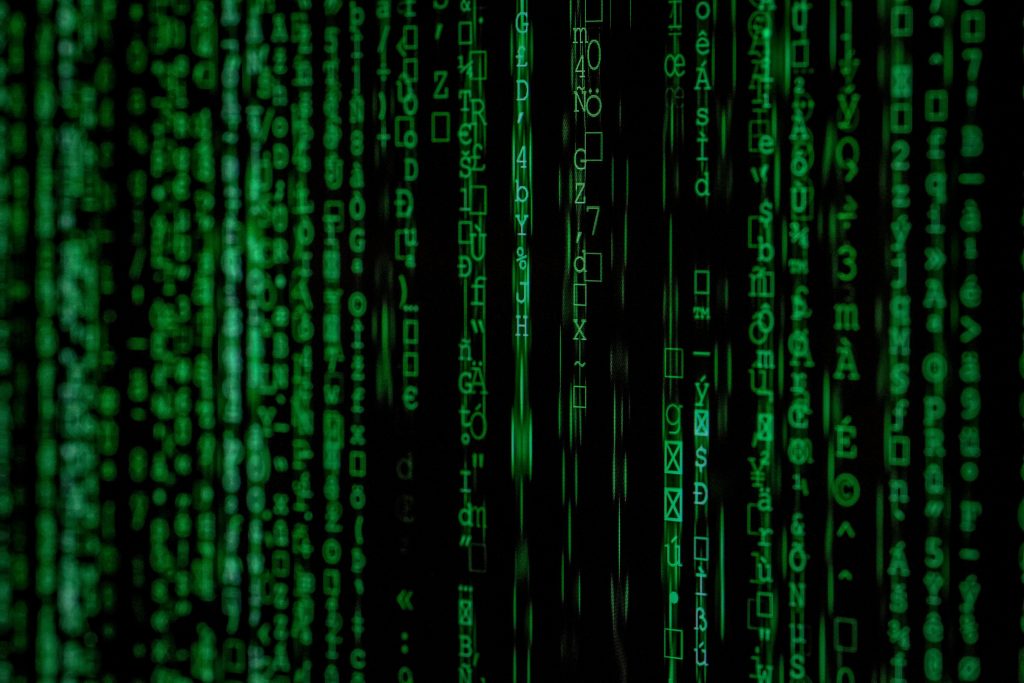Understanding Red Screen Auras: Causes and Solutions
The advent of digital technology has transformed how we interact with our devices, but it has also raised new concerns regarding potential issues that can affect our experience. One such problem that has been discussed in various forums is the appearance of red auras or red screens in the corners of computer monitors and televisions. This phenomenon can be alarming for users, mainly because of its unclear root causes and the potential implications for the health of the screen itself. In this blog post, we’ll delve deeper into the phenomenon of red screen auras, exploring its various causes, effects, and solutions, while also providing insights into how to maintain your screens in optimal condition.
What Are Red Screen Auras?
Red screen auras refer to the noticeable red discoloration or halo effect that can occur around the edges or corners of a display, whether it’s a computer monitor, television, or smartphone screen. This effect may present itself as a faint reddish tinge, which can be distracting during use, especially while watching videos or playing games. The cause of this issue can vary widely from hardware malfunctions to settings configurations.
Why Does This Happen?
There are several potential culprits behind the red screen aura phenomenon. Below мы explore some of the most common reasons:
1. Display Technology Limitations
Different display technologies have varying strengths and weaknesses. For instance, older LCD screens may exhibit color bleeding or color inaccuracies because of the way they handle color production. Display technologies such as OLED have less incidence of color issues, but quality can vary by manufacturer.
2. Graphics Card Issues
Sometimes the problem may stem from the graphics card, which could be failing, improperly installed, or misconfigured. A faulty graphics card can produce distorted images, including color issues like the red auras. Further, corrupt drivers may also lead to unexpected behavior in how images are rendered on your screen.
3. Cable Connections
Loose or damaged connections, particularly with HDMI or DisplayPort cables, can result in display issues. An insecure connection may create interference that might manifest as colors bleeding or appearing incorrectly on the screen. Moreover, using low-quality or incompatible cables can exacerbate these problems.
4. Screen Settings and Calibration
Screens often come with default calibration settings that might not be suitable for every user. A poorly calibrated screen may lead to color inaccuracies, including the appearance of unwarranted red hues. Display settings such as brightness, contrast, and gamma can impact how colors are rendered.
5. Burn-In Effect
OLED displays, known for their rich colors and deep blacks, can suffer from “burn-in,” where static images become permanently etched into the screen. This can lead to color imbalances that could be mistaken for red auras. Although this phenomenon is less common now due to advancements in OLED technology, it remains a concern.
Is It a Hardware Problem or a Software Issue?
One of the most challenging aspects of diagnosing red screen auras is distinguishing between hardware problems and Software or configuration issues. Consider the following steps to troubleshoot and diagnose the problem effectively.
Diagnosing Hardware Issues
To determine if the problem is hardware-related, try the following:
- Check Connections: Ensure all cables are securely connected to both the display and the computer. If you’re using an adapter, check that it is functioning properly.
- Switch Cables: If possible, use a different cable to see if that resolves the problem. A faulty cable can often be the easiest and most cost-effective fix.
- Test on Another Device: Connect your display to a different device. If the red aura disappears, the issue may lie with the initial device’s graphics card or settings.
- Inspect for Damage: Look for visible signs of wear or damage on the screen or the cables.
Troubleshooting Software and Configuration Issues
If hardware checks don’t reveal the issues, consider exploring software-related solutions:
- Update Graphics Drivers: Frequently, outdated drivers can cause display issues. Go to the manufacturer’s website and download the latest version for the graphics card.
- Adjust Display Settings: Access your display settings to calibrate or adjust color settings. Many devices have built-in calibration tools that can help you manage color output.
- Use Diagnostic Tools: Some operating systems include diagnostic tools that can help identify issues with the display configuration. Access these tools to analyze any existing problems.
Potential Solutions
Once you’ve identified the cause of the red screen aura, various solutions can help. Here are some potential remedies:
1. User Manual Reference
Consult your device’s user manual for troubleshooting advice specifically tailored to your type of display. There may be recommendations that are uniquely relevant to your situation.
2. Calibration Tools
Consider investing in calibration tools if you frequently work in color-critical environments (such as graphic design or video editing). Tools like the X-Rite i1Display Pro or Datacolor SpyderX can help ensure that your colors are properly calibrated.
3. Seek Professional Help
If you cannot resolve the issue on your own, it may be best to consult a professional technician. They can diagnose hardware issues that might be beyond the scope of general troubleshooting.
4. Consider a Replacement
If your screen is old or has significant hardware issues, it may be time to replace it. New display technology has vastly improved, offering better color accuracy, resolution, and overall performance.
Preventative Measures to Maintain Display Health
To extend the lifespan of your display and mitigate the appearance of color discrepancies in the future, consider the following preventative measures:
1. Regular Cleaning
Keep your display clean to prevent dust and grime from building up, which can impact performance. Use a microfiber cloth and a gentle display cleaner to maintain clarity and visibility.
2. Environment Control
Monitor the environment where your screens are used. Excessive heat, humidity, or exposure to sunlight can harm electronic components and lead to performance issues. Ensure your devices are in a well-ventilated area away from excessive moisture or heat sources.
3. Proper Shutdown Procedures
Always turn off displays properly when no longer in use. Leaving screens powered on or in sleep mode for extended periods may cause them to face wear and tear more quickly.
4. Monitor Usage Patterns
Be cautious with static images and screensavers. Rotating content and minimizing the display of static images can help prevent burn-in issues and ensure long-term performance.
Conclusion
The presence of red screen auras can be alarming, but understanding the root causes allows users to take appropriate action. Whether it involves simple troubleshooting steps or enlisting the help of professionals, many solutions exist to tackle this frustrating issue. By maintaining your display properly and staying informed about its needs, you can greatly reduce the chances of encountering these problems in the future.
In the end, the health of our screens reflects our interaction with technology. By nurturing our devices and understanding their behaviors, we can create a more enjoyable and seamless digital experience for ourselves and those around us. If you or someone you know is facing similar display issues, remember that inquiring in communities or professional circles can often yield effective solutions and fresh insights.
Share this content:




Thank you for such a comprehensive exploration of red screen auras! You’ve touched on some essential points regarding both the technological causes and practical solutions for this frustrating issue. It’s interesting to note how advancements in display technology, like OLED, are addressing many of the color accuracy concerns seen in older models, yet even these can suffer from problems like burn-in.
I’d like to add that understanding the type of content you’re using and how it displays can also play a significant role in mitigating these issues. For instance, when working in environments that rely on color precision, regularly utilizing calibration tools not only enhances performance but can also reduce stress on the display when it comes to color reproduction.
Additionally, forming a habit of monitoring your screen’s environment is crucial. Factors such as humidity and ambient light can surprisingly impact performance, much like you stated. Regular checks can help prolong the lifespan of your screen and maintain optimal color accuracy.
Lastly, if anyone in the community is experiencing persistent issues, it might be worth investigating forums or communities dedicated specifically to your device or graphics card. Engaging with other users can sometimes yield unique troubleshooting tips that aren’t widely documented elsewhere.
Overall, fostering a deeper understanding of our devices can significantly improve our digital experiences and help us make informed decisions on maintenance and upgrades. Keep up the great work in shedding light on these important tech topics!
Response to Red Screen Aura Issues
Hi there! Thank you for sharing your insights on the red screen aura phenomenon. It’s a common concern that many users encounter, and it’s great to see a comprehensive breakdown of possible causes and solutions.
If you’re experiencing red screen auras, here are some additional tips and steps that may complement your troubleshooting efforts:
Further Troubleshooting Steps
1. Perform a Factory Reset
Sometimes, a factory reset of your display settings can resolve calibration errors. Ensure to back up any necessary settings before proceeding, as this will restore everything to the default factory settings.
2. Change Display Resolution
Switching to a different resolution might help in resolving the color display issue. Experiment with various resolutions to see if that affects the appearance of the red auras.
3. Update Operating System
Ensure your operating system is up to date as well. Sometimes the problem lies within the operating system’s handling of display drivers and settings.
Consideration for Specific Devices
Not all devices handle display settings the same way. If your monitor or television comes with specific Software or driver updates from the manufacturer, ensure you are using them. Look for firmware updates periodically to keep your display’s functionality optimized.
Response to Red Screen Auras Article
Thank you for sharing such an insightful article on the phenomenon of red screen auras! As someone with a technical background, I’d like to add a few more thoughts and suggestions that might assist users experiencing this issue: